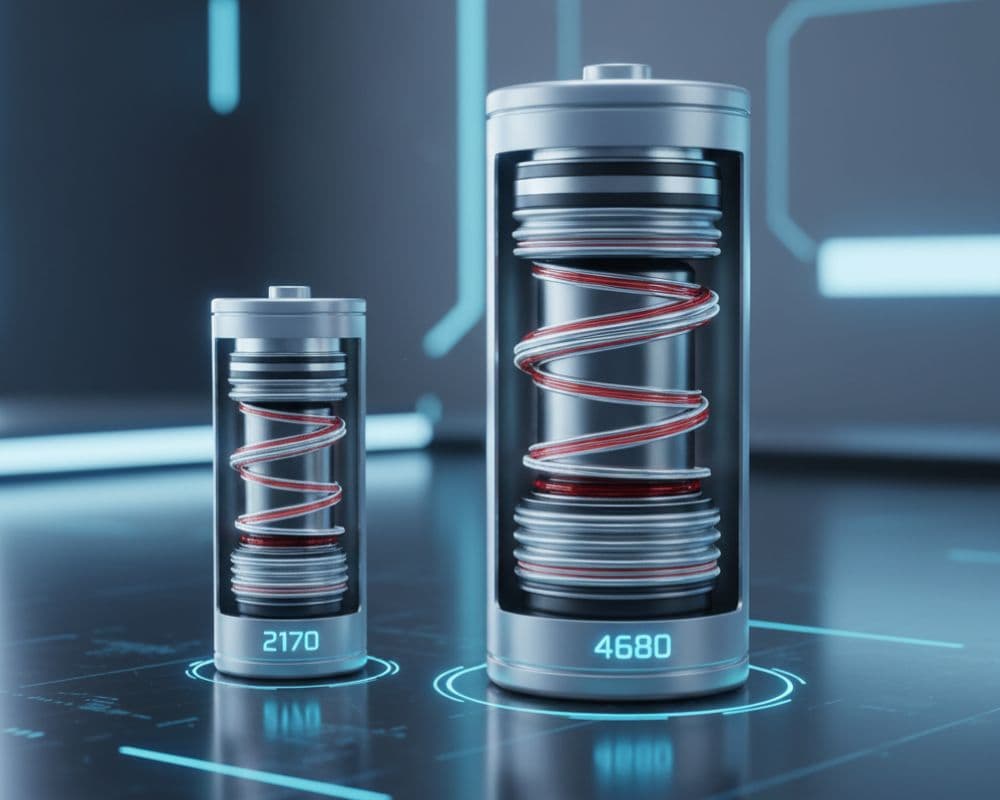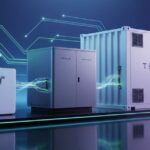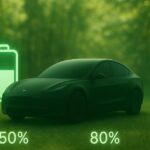Model Y buyers hear confusing words. Some examples are LFP, NCA, 4680, and 2170. Not every Model Y battery is the same. Tesla uses different battery types. The battery inside the car changes three things. First, it changes how people should charge the car. Second, it changes how far people can drive the car. Third, it changes how long the car will last. People need to know the specific battery type. People must follow the correct charging rules. Following the rules keeps the battery healthy for many years. For instance, some batteries charge best to 100% often. Other batteries should only charge to 80% for daily driving. Knowing this simple fact helps people use the car best. Knowing this fact avoids surprises.
Understanding Your Model Y Battery: LFP vs. NCA
The biggest difference between Model Y batteries comes down to the chemicals inside. Tesla mainly uses two types of battery chemistry: LFP (Lithium Iron Phosphate) and NCA (Nickel Cobalt Aluminum). These two types have different strengths and weaknesses that directly affect your daily driving.
LFP (Lithium Iron Phosphate) Batteries
LFP batteries are the newer type for Tesla and are usually found in the Standard Range Rear-Wheel Drive (RWD) Model Y.
Key Benefit
The batteries are strong and safe. They are also cheap to build. Building the batteries cheaply helps make the car’s price lower.
Charging Rule: Charge the LFP battery to 100% at least once every week. The battery management system needs a full charge. This helps the system know the real amount of energy inside. If the battery only charges to 80%, the car may show the wrong driving distance.
Range: LFP batteries hold less power for their size. LFP batteries have a lower energy density. The Model Y with an LFP battery will drive a shorter distance than the Long Range model.
NCA (Nickel Cobalt Aluminum) Batteries
NCA batteries are the traditional type used by Tesla and are found in the Long Range and Performance Model Y versions.
Key Benefit
NCA batteries have higher energy density. Batteries store more power in the same space. More power gives you a longer driving range.
Charging Rule: You should charge your NCA battery to about 80% or 90% for daily driving. Charging to 100% every day causes the battery to wear out faster. You should only charge to 100% when you start a long road trip.
Range: These batteries provide the maximum range for the Model Y. Manufacturers use these batteries in the Long Range models.
| Feature | LFP (Lithium Iron Phosphate) | NCA (Nickel Cobalt Aluminum) |
|---|---|---|
| Model Y Trim | Standard Range RWD | Long Range, Performance |
| Daily Charge Limit | 100% (Recommended at least once a week) | 80–90% (For daily driving) |
| Energy Density | Lower (Shorter Range) | Higher (Longer Range) |
| Cost | Lower | Higher |
| Longevity | Excellent cycle life (can handle more full charges) | Excellent energy density (more miles per charge) |
The Cell Wars: 2170 vs. 4680 Cells
Besides the chemical makeup (LFP or NCA), the battery cells also come in different physical sizes. Think of the cells like the AA batteries inside a remote control—they are the small power units that make up the big battery pack. Tesla uses two main cell formats in the Model Y: the 2170 and the newer 4680.

The Proven 2170 Cells
The 2170 cell powers the Model Y. The name “2170” means the cell is 21 millimeters wide and 70 millimeters tall.
What to Know: Most Model Y cars use 2170 cells. These cells are reliable technology Tesla used for years. Battery packs with these cells are easy to understand and simple to fix.
The New 4680 Structural Pack
The 4680 cell is Tesla’s next-generation battery. Cell is much bigger (46 millimeters wide, 80 millimeters tall). Cell has a new design called “tabless.”
What to Know: 4680 cells are used in some Standard Range Model Ys. Those cars are built at the Texas factory. The biggest difference is cells are part of a structural battery pack. Pack is built right into the car’s frame. Pack makes the car’s body stronger and lighter.
Buyer Beware: The structural pack is a cool engineering feature. Pack can make repairs more complex and costly. Battery is part of the car’s structure. For now, 4680 pack is mainly paired with LFP chemistry in the Standard Range model.
Real-World Range: How Far Can You Really Go?
When you look at a Tesla’s range, you see the EPA-estimated range. The government sets this number. Often, it is higher than the range you get when you drive every day. The real-world range is the distance you actually drive.
Why is the real-world range lower? Many things affect how far a Model Y can go on one charge:
- Speed: Driving fast, over 70 miles per hour, uses much more energy.
- Weather: Cold weather hurts EV range the most. The car uses battery power to warm the inside and the battery. This can lower your range by 20% or more.
- Terrain: Driving uphill uses more power than driving on flat roads.
- HVAC: Running the air conditioning or heater takes power from the battery.
Practical Tip
Use the car’s built-in navigation system instead of the big number on the screen that shows the estimated range. When a person puts in a destination, the car uses real-time data about speed, changes in height, and weather. This data gives a much more accurate prediction of how much battery remains when the car reaches the destination.
Here is a look at the estimated EPA range versus what owners often see in the real world:
| Model Y Trim | EPA Estimated Range (Miles) | Real-World Range (Miles) |
|---|---|---|
| Standard Range RWD (LFP) | ~260 | ~210 – 230 |
| Long Range AWD (NCA) | ~310 | ~260 – 280 |
| Performance AWD (NCA) | ~285 | ~240 – 260 |
Charging Best Practices to Maximize Battery Life
The way a person charges a Model Y is the most important thing for keeping the battery healthy. It is like taking care of a person’s own health. Small, good habits help a lot over time.
1. Daily Charging Habits
Tesla tells all owners one easy rule: A plugged-in Tesla is a happy Tesla.
Plug In, Always
Owners should plug in their car when they get home. Do this even if owners drive only a little bit. The car will use the wall’s power. This power helps the battery stay at the right temperature and keeps it healthy. The car does not use the battery’s own power for these tasks.
Know Your Limit
If your car has an NCA battery (Long Range/Performance models), set your daily charging limit to 80% or 90%. You should only charge the car to 100% right before you start a long drive.
If your car has an LFP battery (Standard Range RWD model), set your daily charging limit to 100%. You must do this charge at least once every week. Doing this is very important. It lets the car measure the battery’s true charge correctly.
Supercharging and Battery Health
Supercharging is quick and easy. Many people fear that fast charging will damage their battery.
The truth is that Supercharging is safe. Tesla made the battery and the Supercharger network to work well together. You should use Superchargers for long trips and when you need to charge fast.
If you use a Supercharger every single day, starting when the battery is very low (less than 10%) and ending when the battery is very full (over 80%), it can cause a small amount more wear than slow charging at home. But for most people, the change is so small that worry is not needed. Charging at home is always best for daily use.
Battery Calibration
Your Model Y may show a range number that looks wrong. A problem with the battery itself is usually not the cause. The car’s computer, called the Battery Management System (BMS), is typically the reason.
How to Recalibrate:
Feelings that the range is wrong mean you can “recalibrate” the BMS.
- Charge the car to 100%. Leave it plugged in for a few hours.
- Drive the car until the battery is 20% or lower.
- Repeat this process a few times. This action lets the computer see the battery’s full range, from empty to full. It will then give you a more accurate range number.
Conclusion
The Tesla Model Y battery is a great modern machine. The battery is safe, powerful, and lasts for many miles. A buyer must know the battery type (LFP or NCA) and follow the right charging rules.
- If you have a Long Range or Performance Model (NCA): Charge the car to 80-90% every day.
- If you have a Standard Range Model (LFP): Charge the car to 100% at least once a week.
Doing this makes the car go farther, keeps the battery from wearing out fast, and helps you enjoy the car for a long time. The battery is the heart of the electric car, and a little care will help it work well.







